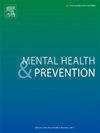Peer teaching in Psychological First Aid Training to promote students’ self-efficacy: A pilot randomised control trial
IF 2.4
Q2 Medicine
引用次数: 0
Abstract
Introduction
Students’ mental health disorders are increasing. However, there is a lack of studies on using the peer teaching method, where students teach other students to address the problem and improve students’ general self-efficacy.
Aim
To measure the feasibility of the peer teaching method in PFA training to promote self-efficacy.
Materials and Methods
This feasibility pilot study has a randomised controlled design. Data were collected pre- and post-intervention using the online general self-efficacy scale and reflection sheet. The number of enrolled participants, the proportion of enrolled participants who attended at least one session, the retention rate, and program acceptability were analysed.
Results
A total of 85 out of 208 students (40,9 %) who enrolled and randomised joined the study. Twenty-eight out of 104 participants (26,9 %) in the intervention group attended their training, much lower than that of the control group (74 out of 104 participants completed post-tests). However, only 25 out of 28 participants (89,3 %) completed their training. Results indicated positive responses from the participants, who felt the training was enjoyable and increased their knowledge of basic PFA.
Conclusion
The study found that the peer teaching method in a simplified PFA training session, without supervision, was feasible as a mental health intervention in a low-resource setting and acceptable for students to gain skills and knowledge about basic PFA. However, to increase students' participation, approaches need to be modified to increase program flexibility tailored to their time.
同伴教学在心理急救训练中提高学生自我效能感:一项先导随机对照试验
学生的心理健康问题越来越多。然而,缺乏使用同伴教学方法的研究,即学生教其他学生解决问题,提高学生的总体自我效能感。目的探讨同伴教学法在PFA培训中提高自我效能感的可行性。材料与方法本可行性初步研究采用随机对照设计。使用在线一般自我效能量表和反思表收集干预前后的数据。分析了参与人数、至少参加一次课程的参与者比例、保留率和课程可接受性。结果208名学生中有85名(40.9%)被随机纳入研究。干预组104名参与者中有28人(26.9%)参加了培训,远低于对照组(104名参与者中有74人完成了后测试)。然而,28名参与者中只有25人(89.3%)完成了他们的培训。结果显示,参与者反应积极,他们觉得培训是愉快的,并增加了他们的基本PFA知识。结论在低资源环境下,同伴教学法在无监督的简易PFA培训中是一种可行的心理健康干预方法,可使学生获得基本的PFA技能和知识。然而,为了提高学生的参与度,需要修改方法,增加项目的灵活性,以适应他们的时间。
本文章由计算机程序翻译,如有差异,请以英文原文为准。
求助全文
约1分钟内获得全文
求助全文
来源期刊

Mental Health and Prevention
Medicine-Psychiatry and Mental Health
CiteScore
2.10
自引率
0.00%
发文量
22
审稿时长
24 days
 求助内容:
求助内容: 应助结果提醒方式:
应助结果提醒方式:


